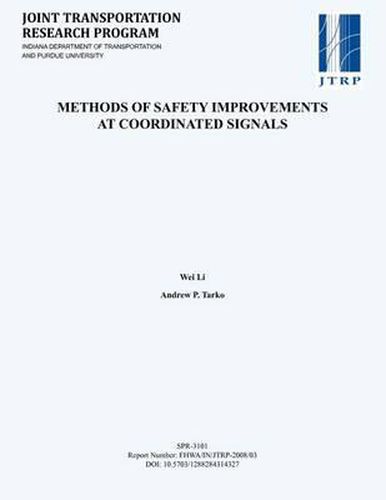Readings Newsletter
Become a Readings Member to make your shopping experience even easier.
Sign in or sign up for free!
You’re not far away from qualifying for FREE standard shipping within Australia
You’ve qualified for FREE standard shipping within Australia
The cart is loading…






In this research, the safety impact of arterial signal coordination is investigated. Based on the findings, procedures are proposed to incorporate safety considerations into signal coordination design. In addition, a software tool is developed to facilitate the use of the research findings. Signal coordination has been extensively employed as a tool to optimize an arterial system’s mobility performance, commonly measured by the total number of vehicle stops and the time of delays. Although vehicle crashes at signalized intersections have long been recognized as a major safety threat, studies to date have been limited locally to non-coordinated signals or the noncoordinated features of signal timings. Disaggregate statistical models are developed to identify the influential crash likelihood factors of rear-end and right-angle crashes, the two most frequent types of intersection crashes. To capture the severity factors, the outcomes are further classified into property-damage-only (PDO) and injury-fatal (IF) crashes. The crash likelihoods for each 15-minute interval are used as the response variables of the models. For each 15-minute interval, predictive variables are collected or derived from available data, including the volume, signal timings, and traffic patterns. A traffic pattern characterization is designed to represent each 15-minute interval’s arrival pattern. The key findings are as follows: First, signal coordination significantly affects crash likelihood. Certain traffic arrival patterns are associated with significantly lower crash likelihoods. Second, the dilemma zone contributes in a limited way to the crash likelihoods. Third, adjusted volumes, based on the presented models, were found to be better predictors of crash likelihoods, which indicates that only a portion of all vehicles are highly susceptible to crashes. Fourth, shorter distances from upstream intersection and shorter cycle lengths are associated with lower risk levels of crashes.
$9.00 standard shipping within Australia
FREE standard shipping within Australia for orders over $100.00
Express & International shipping calculated at checkout
In this research, the safety impact of arterial signal coordination is investigated. Based on the findings, procedures are proposed to incorporate safety considerations into signal coordination design. In addition, a software tool is developed to facilitate the use of the research findings. Signal coordination has been extensively employed as a tool to optimize an arterial system’s mobility performance, commonly measured by the total number of vehicle stops and the time of delays. Although vehicle crashes at signalized intersections have long been recognized as a major safety threat, studies to date have been limited locally to non-coordinated signals or the noncoordinated features of signal timings. Disaggregate statistical models are developed to identify the influential crash likelihood factors of rear-end and right-angle crashes, the two most frequent types of intersection crashes. To capture the severity factors, the outcomes are further classified into property-damage-only (PDO) and injury-fatal (IF) crashes. The crash likelihoods for each 15-minute interval are used as the response variables of the models. For each 15-minute interval, predictive variables are collected or derived from available data, including the volume, signal timings, and traffic patterns. A traffic pattern characterization is designed to represent each 15-minute interval’s arrival pattern. The key findings are as follows: First, signal coordination significantly affects crash likelihood. Certain traffic arrival patterns are associated with significantly lower crash likelihoods. Second, the dilemma zone contributes in a limited way to the crash likelihoods. Third, adjusted volumes, based on the presented models, were found to be better predictors of crash likelihoods, which indicates that only a portion of all vehicles are highly susceptible to crashes. Fourth, shorter distances from upstream intersection and shorter cycle lengths are associated with lower risk levels of crashes.